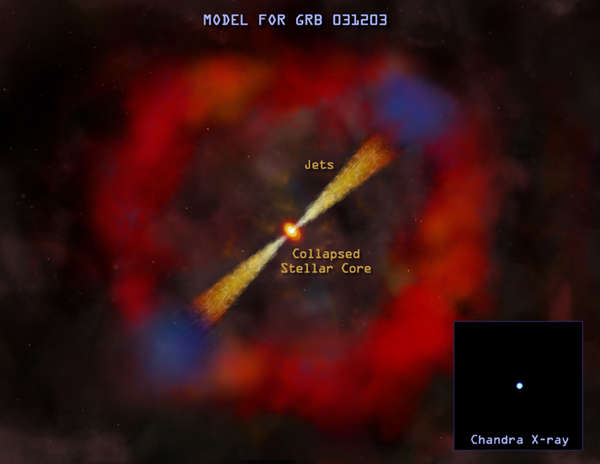

|

|
|
||||
|
GRB 031203: A gamma-ray burst 1.3 billion light years from Earth (Credits: Illustration: NASA/CXC/M.Weiss; Inset: NASA/CXC/Caltech/A.Soderberg et al.) Caption: This illustration describes a model for a gamma ray burst in which a jet of high energy particles from a rapidly rotating black hole is interacting with surrounding matter. Monitoring of the afterglow of GRB 031203 with Chandra (inset image) and other telescopes showed it was an unusual gamma-ray burst that radiated only a fraction of the energy of a normal gamma ray burst. Gamma-ray bursts, like supernovas, are thought to be produced by the collapse of the core of a massive star. Many examples exist where the core collapses to form a neutron star, resulting in a supernova. But what occurs when a core collapses to form a black hole is uncertain. The discovery of substandard gamma-ray bursts should give astronomers valuable clues to the processes responsible for supernovas, black hole formation, and gamma ray bursts. Scale: Inset image is about 1 arcmin per side Chandra X-ray Observatory ACIS Image |
|
|